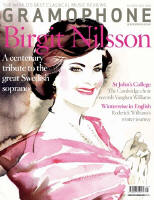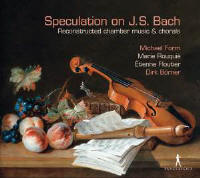Texte paru dans: / Appeared in: |
|
|
Outil de traduction (Très approximatif) |
|
|
Reviewer:
William Yeoman The chorale melody was the cantus firmus of Bach’s art, its generative, motivating force, its divine metaphor. It serves a similar function in these provocative musical ‘speculations’ – the spectres of trio sonatas and chorale arrangements which might have been. ‘Johann Sebastian Bach’s chamber music was in constant transition’, writes recorder player Michael Form in his booklet note, before speculating on the possible chamber works implied not just in Bach’s extant music but in his practice as a musician. He also introduces the chorale arrangements as interludes which, in their varied instrumentations, imitate organ stops while presenting them in ‘a new light, in an unfamiliar sonority … intimate alternatives to the romantic overstimulation of Leopold Stokowski’s orchestral transcriptions’. The combination of recorder, violin, gamba and harpsichord gives the three trio sonatas and final, resonant ‘Concerto a 4’ a lightness and transparency well suited to the predominantly dancelike movements, whether nonchalant, as in the Affettuoso of the D major Trio Sonata after BWV1032, which is an extraordinary arrangement of the F minor Prelude from Book 2 of The Well-Tempered Clavier, or stately, as in the Largo of the B major Trio Sonata, or fast and buoyant, as in the final Allegro of the same Trio. But it is the exquisite chorale arrangements, both ‘straight’ and in harpsichordist Dirk Börner’s clever compositions combining three-part inventions with chorale melodies, that steal the show here. They are just so compellingly realised, not least in performances which, even when the recorder is absent, as in the gorgeous Wenn wir in höchsten Nöthen sein for violin and gamba, seem to take their cue from its delicate breath-born(e) tones. |
|




